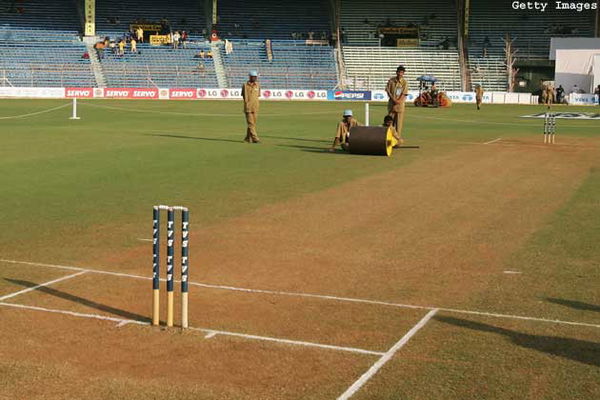

What is the reason behind India’s shoddy performance on the foreign shores?
Why Indian batsmen find it tough against the short ball?
Why India still does not have a fast bowler who can consistently clock 145+kph?
ADVERTISEMENT
Article continues below this ad
To look for an answer we went deeper into the ocean of problems, only to realize that the problem is not actually “foreign”, it is something indigenous. Yes, the root of all these problems is the INDIAN DOMESTIC SETUP.
ADVERTISEMENT
Article continues below this ad
The main problem why we struggle on foreign pitches lies in the fact that the Indian cricketers haven’t seen anything like them until they finally play on it. The Indian pitches are suicidal for quick bowlers. Add the severely unfriendly weather conditions to it and there you have killed the very idea of a Dale Steyn in the womb.
Very few pitches in India assist the quick bowlers. When all you see are dead tracks or highways you obviously don’t get the requisite motivation to bend your backs and hit the deck. When you see the ball rising from the pitch, keeper jumping to collect it, hearing the harsh sound of the ball hitting the keeper’s gloves it encourages you to run in for the next delivery and bowl quicker. The placid tracks force the bowler to focus more on line and length rather than bowling quick. That’s also the reason why we have very quality swing bowlers in the side but they are inefficient when the pitches don’t aid swing and they become easy meat for the batsmen. Also most of the domestic season is played in the tropical conditions where the hot and humid weather absorbs all the energy and the bowlers become dehydrated, further hurting their cause. This does not help the batsman either as he scores heaps of runs on dead tracks to come in the national reckoning, earn a ticket for a foreign tour where the reality bites him when a bowl delivered at 90 miles an hour whips past his ear leaving him holding a bat ironically having a Spartan sticker and a wounded morale pondering over his mere existence. A perfect example is Ravindra Jadeja who is the only player in the domestic circuit to score three triple centuries but is struggling to get past a half century abroad. India’s poor slip fielding in the recently concluded England series also highlights the importance of a better pitch culture in domestic tournaments. The slip fielders are used to gathering the ball below the knee level so when a ball is edged at chest high level they are slow to pounce upon it.
There are 8-9 domestic tournaments in a year in India. And all of them carry a significant importance with them. So there is huge workload on the pace bowlers. With pitch and conditions already not helping, they cut down on pace to keep themselves fit for the entire season.
ADVERTISEMENT
Article continues below this ad
Many critics also say that the selection criteria is also biased, with players being considered only from the big teams like Mumbai and Delhi and others from the plate division are neglected. This has a huge bearing on Indian Cricket as exciting raw talent is being neglected and some are given more chances than they actually deserve.
BCCI being the wealthiest board in the world has to pull up its socks and find alternatives to the present condition. Experts should be appointed to review the present domestic setup and find a possible solution to the above mentioned problems. Having an advantage of a large number of stadiums, pitches can be experimented to give the domestic players a taste of everything and thus ensuring that the highest wicket taker or highest run scorer in the Ranji season is truly an all-weather cricketer who could serve the country better.
ADVERTISEMENT
ADVERTISEMENT
ADVERTISEMENT
ADVERTISEMENT

